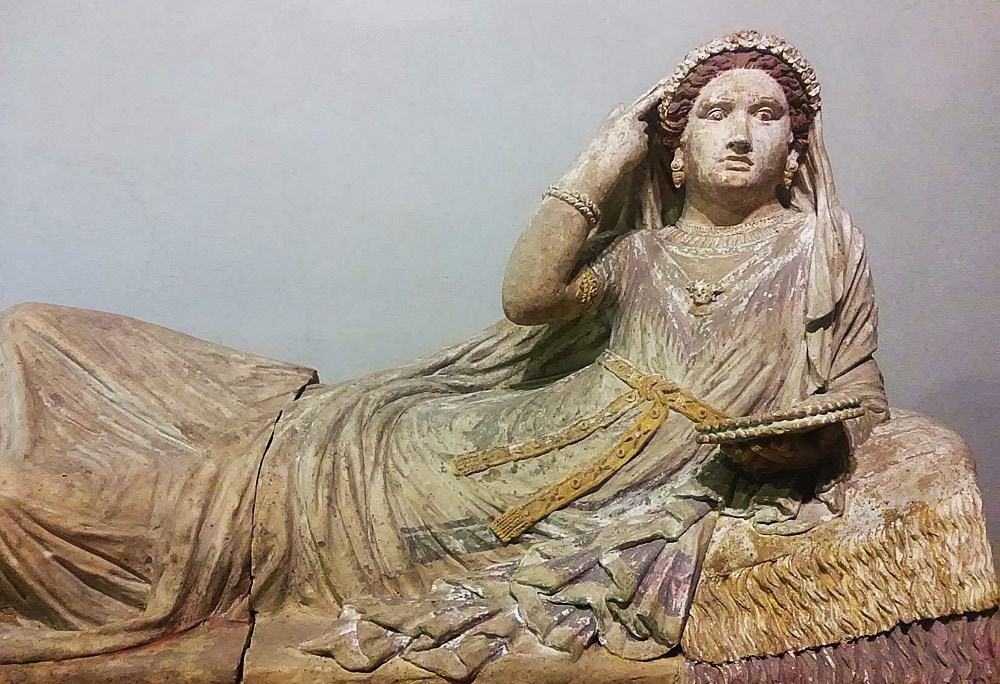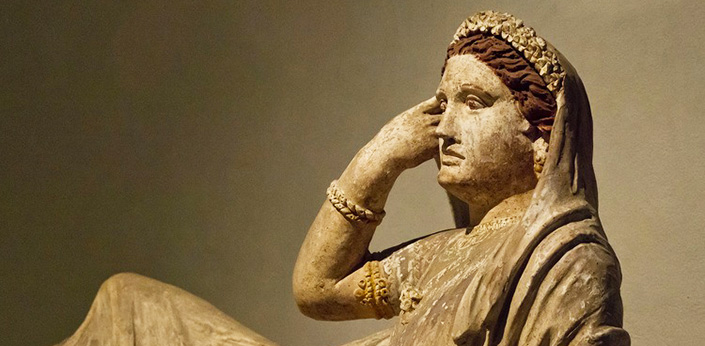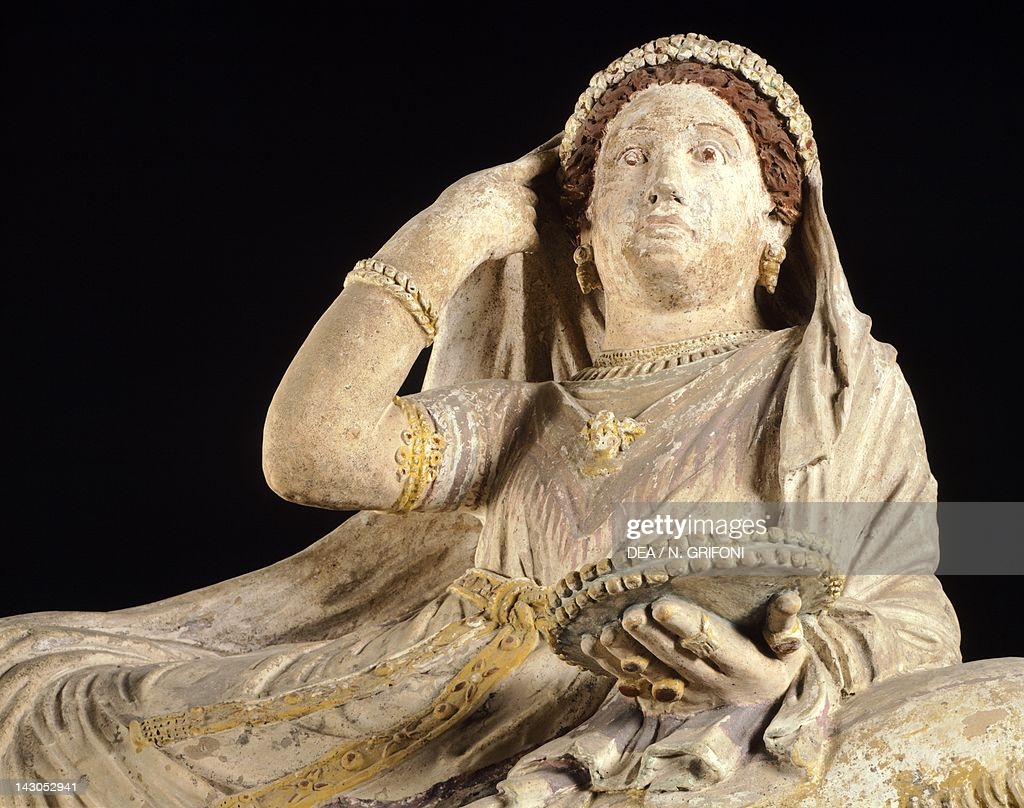Sarcophagus of Larthia Seianti (150-130 BCE; polychrome terracotta, 105 x 164 x 54 cm; Florence, National Archaeological Museum). Photo Credit Finestre sull’Arte https://www.finestresullarte.info/opere-e-artisti/come-vestivano-etruschi-moda-toscana-2600-anni-fa
“It is a masterpiece of Etruscan sculpture from Chiusi, Tuscany: a terracotta sarcophagus with the case beautifully decorated with a floral motif frieze, and surmounted by the portrait of Larthia , a lady belonging to a wealthy Chiusi family from the second century BC. And in addition to being a work of art of indisputable quality, the portrait of Larthia is also a very important document on the fashion and customs of the Etruscans (also because, moreover, much of the original polychrome has been preserved: the sarcophagus, in fact, was painted in color). The woman is stretched out on her kline , the particular bed on which the ancients used to lie down during banquets, and is caught in the act of looking at herself , while with one hand she removes the veil that surrounds her head. The jewelry she wears (disc earrings with showy golden pendants, bracelets also gilded, an armilla, or the bracelet that was used to wear on the biceps, a diadem and a Medusa head pendant on the neckline) indicate her high social status. Her dress instead denotes the elegant taste of Etruscan women.
It is a white tunic , with three violet vertical bands, tied at the waist by a belt decorated with studs. It has a V-neck , highlighted by as many purple borders, and goes down to the legs to leave only the feet uncovered. This tunic has a precise name: it is called chiton and is a garment of Greek derivation. Larthia wears a short – sleeved variant, but the chiton can also be sleeveless (it should be emphasized that it was a garment for all seasons: they were made of wool or cooler linen for the warmer seasons) and, as in the case of the Chiusi lady, the task of covering the shoulders is entrusted to a small cape , light or heavy depending on the season, which can also cover the head. The cloak is however a rather simple piece of clothing, which is worn simply by putting it on the shoulders and letting it fall straight, so as to make it form a rectangle on the shoulders. The short cape is called himation , it is also used by men, and is a garment of Greek derivation. In many cases, the cloak is fixed on both shoulders by means of buttons that can also be finely decorated: the Etruscans could count on a very refined art of jewelry.”
“as was the case in Greek fashion, decoration in Etruscan fashion had a purely ornamental character: the opposite of what happened in Roman fashion, which had developed a symbolic decoration. Still, for the Etruscans the choice of clothing is not rigidly linked to the social class to which they belong, as was the case with the Romans: Etruscan men and women usually choose their clothes freely and according to their individual taste.”
pictures:
picture https://www.beniculturalionline.it/event.php?n=1940
Getty images Photo by DeAgostini




